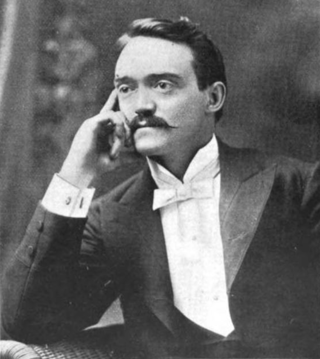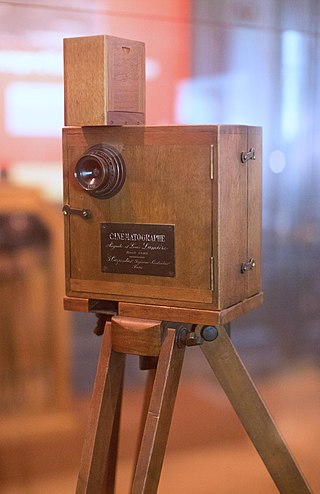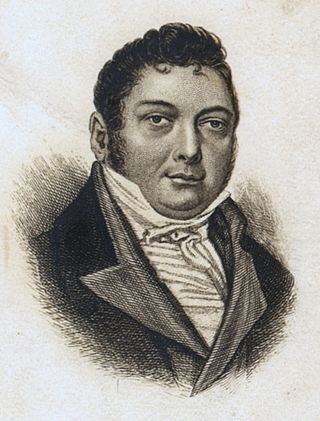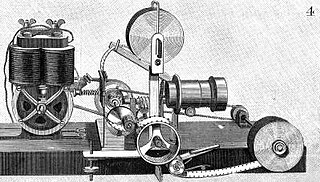Related Research Articles

The Lumière brothers, Auguste Marie Louis Nicolas Lumière and Louis Jean Lumière, were French manufacturers of photography equipment, best known for their Cinématographe motion picture system and the short films they produced between 1895 and 1905, which places them among the earliest filmmakers.

James Watt was a Scottish inventor, mechanical engineer, and chemist who improved on Thomas Newcomen's 1712 Newcomen steam engine with his Watt steam engine in 1776, which was fundamental to the changes brought by the Industrial Revolution in both his native country Great Britain, and the rest of the world.

William Murdoch was a Scottish chemist, inventor, and mechanical engineer.

Thomas Savery was an English inventor and engineer. He invented the first commercially used steam-powered device, a steam pump which is often referred to as the "Savery engine". Savery's steam pump was a revolutionary method of pumping water, which improved mine drainage and made widespread public water supply practicable.

Louis Aimé Augustin Le Prince was a French artist and the inventor of an early motion-picture camera, and director of Roundhay Garden Scene.

Charles Francis Jenkins was an American engineer who was a pioneer of early cinema and one of the inventors of television, though he used mechanical rather than electronic technologies. His businesses included Charles Jenkins Laboratories and Jenkins Television Corporation. Over 400 patents were issued to Jenkins, many for his inventions related to motion pictures and television.
Thomas J. Armat was an American mechanic and inventor, a pioneer of cinema best known through the co-invention of the Edison Vitascope.

Cinematograph or kinematograph is an early term for several types of motion picture film mechanisms. The name was used for movie cameras as well as film projectors, or for complete systems that also provided means to print films.

Vitascope was an early film projector first demonstrated in 1895 by Charles Francis Jenkins and Thomas Armat. They had made modifications to Jenkins' patented Phantoscope, which cast images via film and electric light onto a wall or screen. The Vitascope is a large electrically-powered projector that uses light to cast images. The images being cast are originally taken by a kinetoscope mechanism onto gelatin film. Using an intermittent mechanism, the film negatives produced up to fifty frames per second. The shutter opens and closes to reveal new images. This device can produce up to 3,000 negatives per minute. With the original Phantoscope and before he partnered with Armat, Jenkins displayed the earliest documented projection of a filmed motion picture in June 1894 in Richmond, Indiana.

Matthew Murray was an English steam engine and machine tool manufacturer, who designed and built the first commercially viable steam locomotive, the twin-cylinder Salamanca in 1812. He was an innovative designer in many fields, including steam engines, machine tools and machinery for the textile industry.

The Movietone sound system is an optical sound-on-film method of recording sound for motion pictures that guarantees synchronization between sound and picture. It achieves this by recording the sound as a variable-density optical track on the same strip of film that records the pictures. The initial version was capable of a frequency response of 8500 Hz. Although modern sound films use variable-area tracks instead, modern motion picture theaters can play a Movietone film without modification to the projector. Movietone was one of four motion picture sound systems under development in the U.S. during the 1920s, the others being DeForest Phonofilm, Warner Brothers' Vitaphone, and RCA Photophone, though Phonofilm was principally an early version of Movietone.

This timeline of heat engine technology describes how heat engines have been known since antiquity but have been made into increasingly useful devices since the 17th century as a better understanding of the processes involved was gained. A heat engine is any system that converts heat to mechanical energy, which can then be used to do mechanical work.They continue to be developed today.
The decade of the 1890s in film involved some significant events.

Theodore Willard Case was an American chemist who invented the Movietone sound-on-film system.

The Latham Loop is used in film projection and image capture. It isolates the filmstrip from vibration and tension, allowing movies to be continuously shot and projected for extended periods.

The Phantoscope was a film projection machine, a creation of Charles Francis Jenkins and Thomas Armat. In the early 1890s, Jenkins began creating the projector. He later met Thomas Armat, who provided financial backing and assisted with necessary modifications.
Henri Joly (1866–1945) was a French inventor and businessman. He developed early versions of motion picture film, cameras, and projectors.
Motion Picture Patents Co. v. Universal Film Mfg. Co., 243 U.S. 502 (1917), is United States Supreme Court decision that is notable as an early example of the patent misuse doctrine. It held that, because a patent grant is limited to the invention described in the claims of the patent, the patent law does not empower the patent owner, by notices attached to the patented article, to extend the scope of the patent monopoly by restricting the use of the patented article to materials necessary for their operation but forming no part of the patented invention, or to place downstream restrictions on the articles making them subject to conditions as to use. The decision overruled The Button-Fastener Case, and Henry v. A.B. Dick Co., which had held such restrictive notices effective and enforceable.

Charles Crawford Davis was an American audio engineer known for his innovations in the motion picture industry.